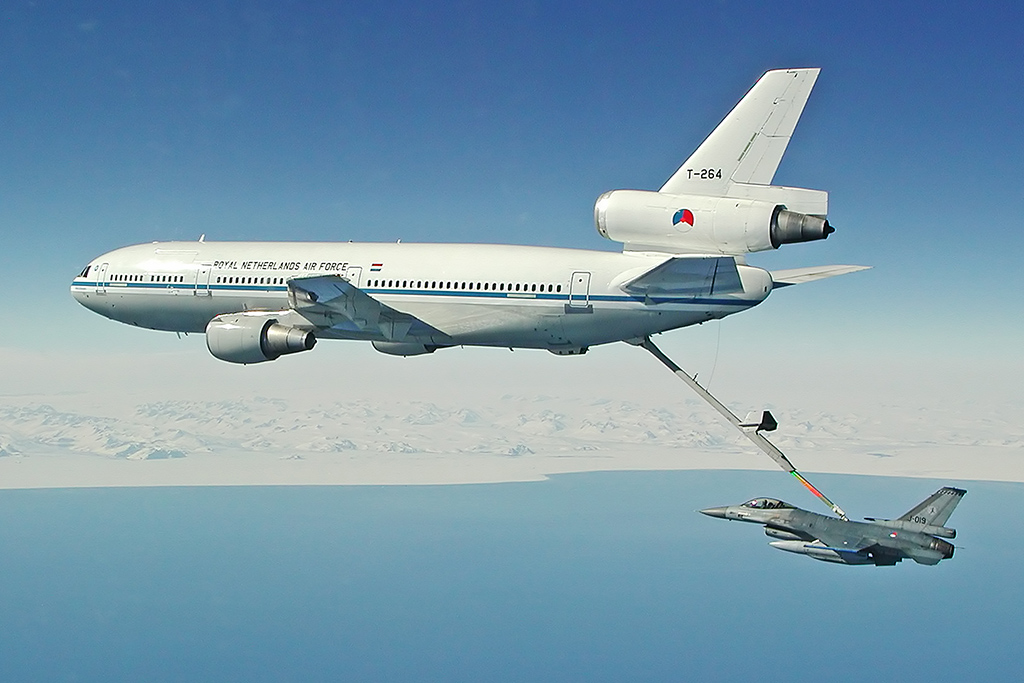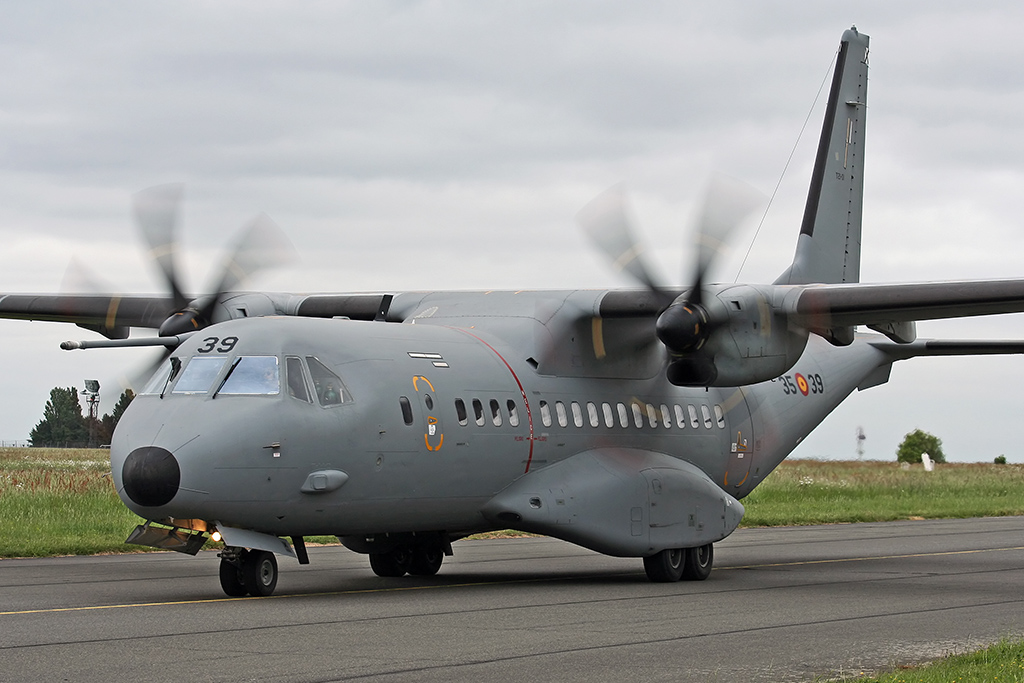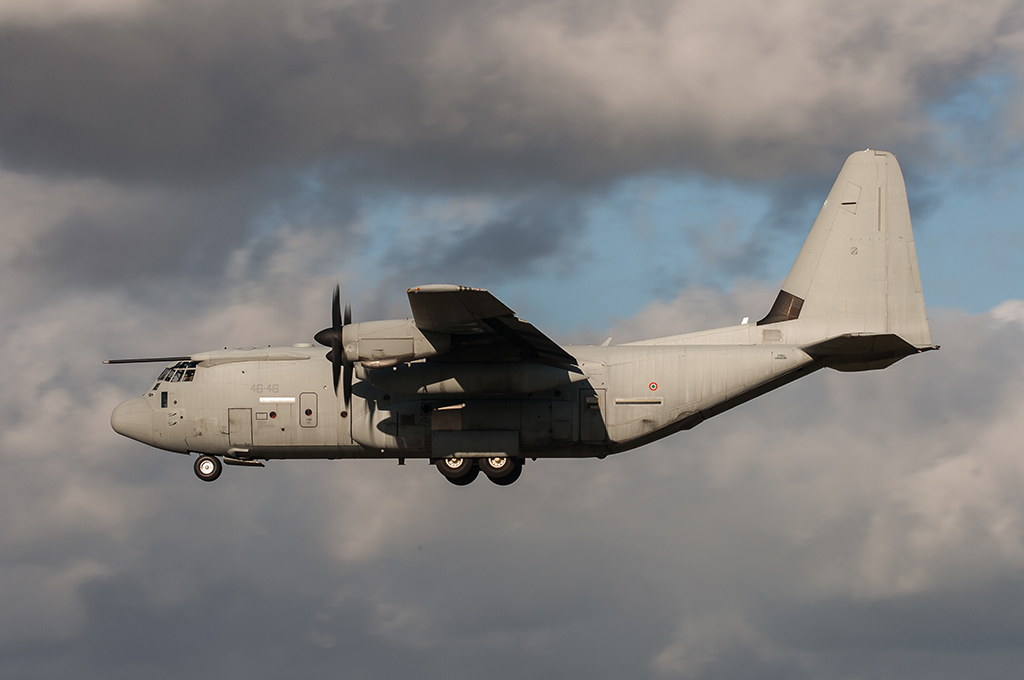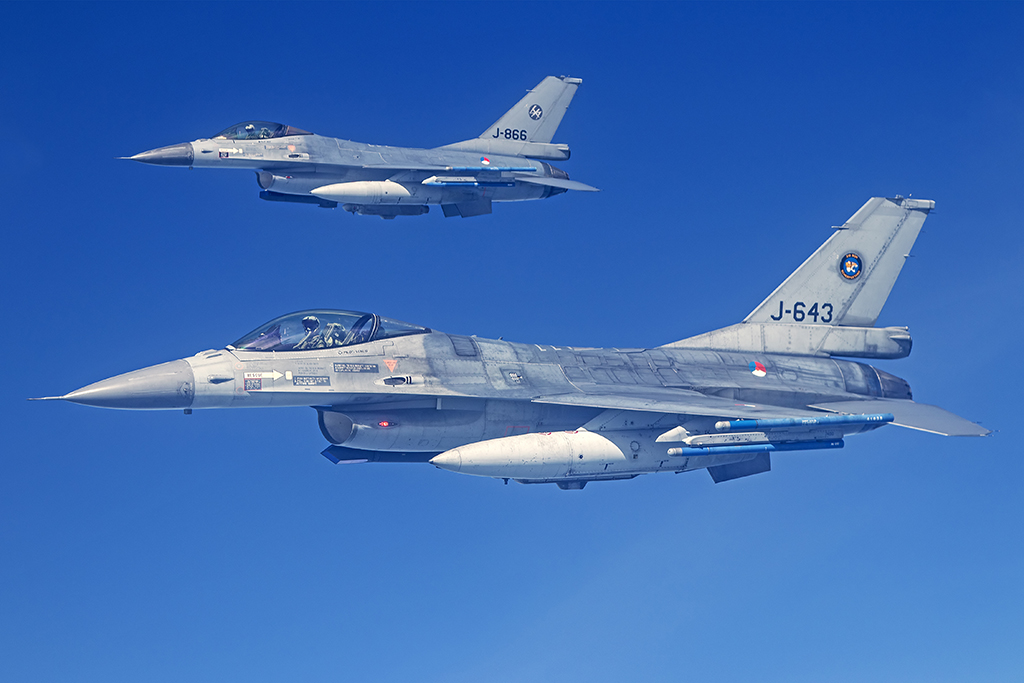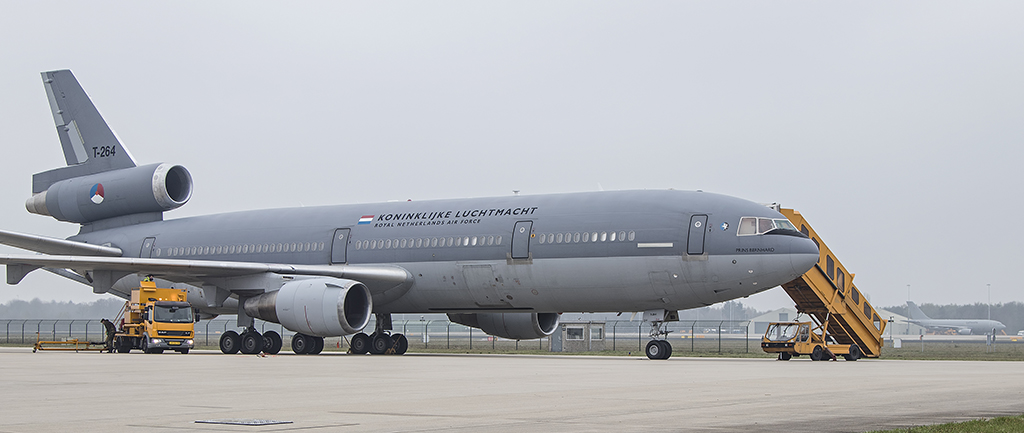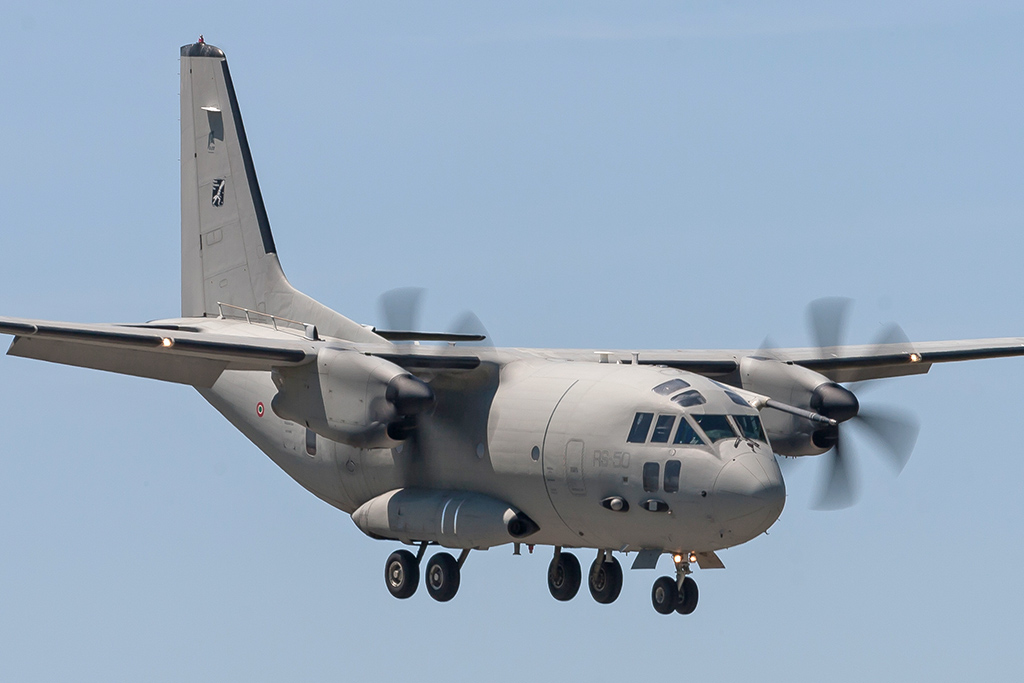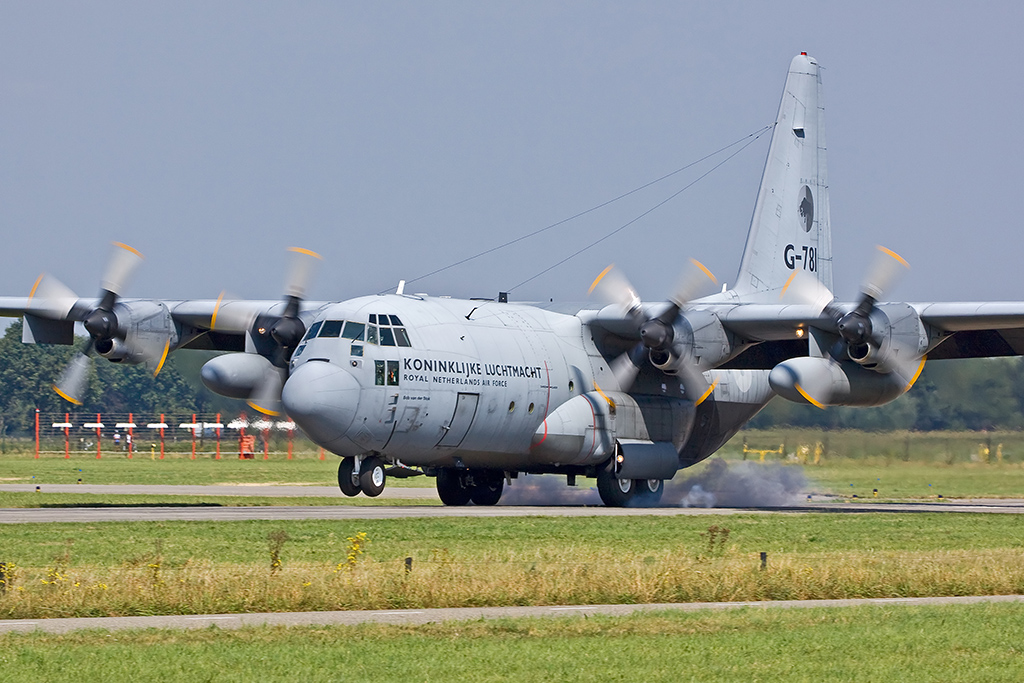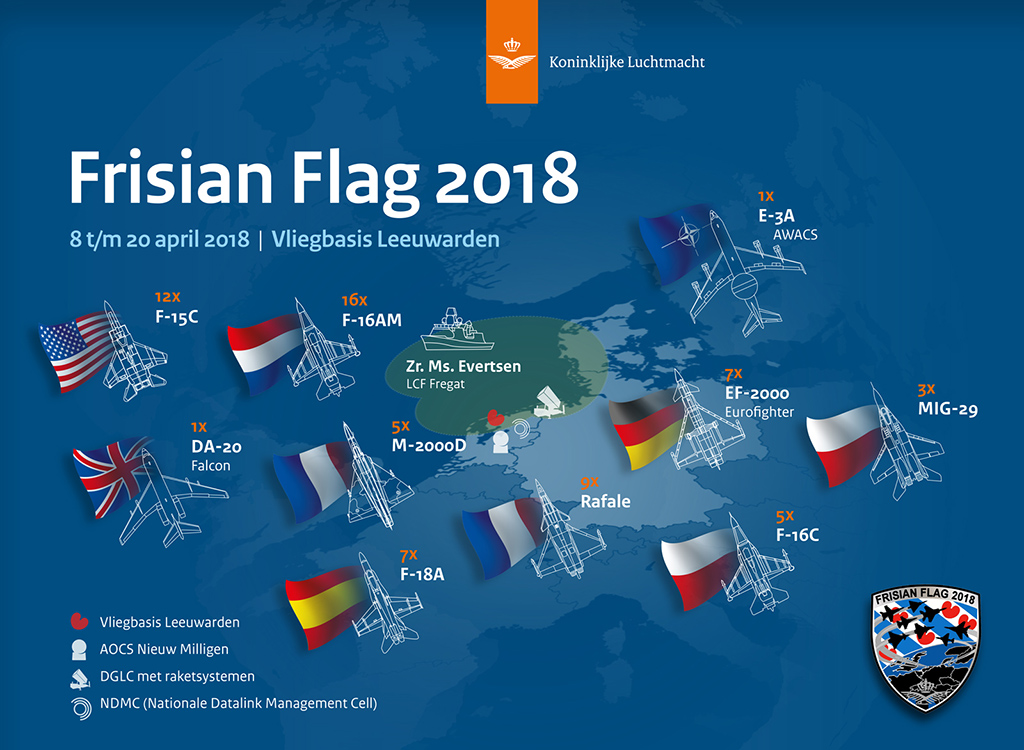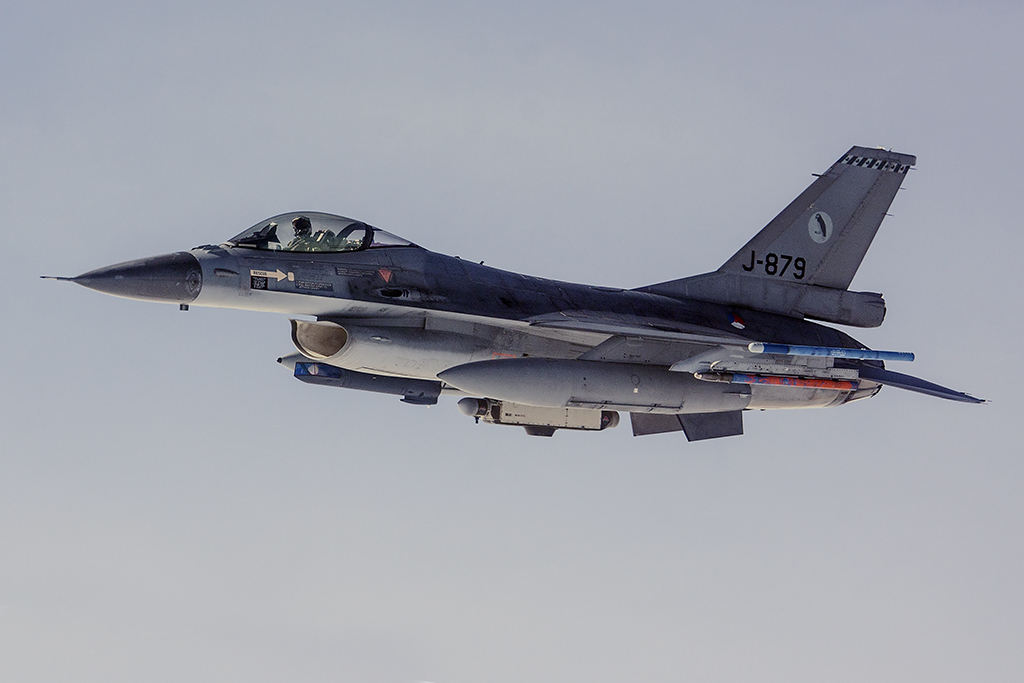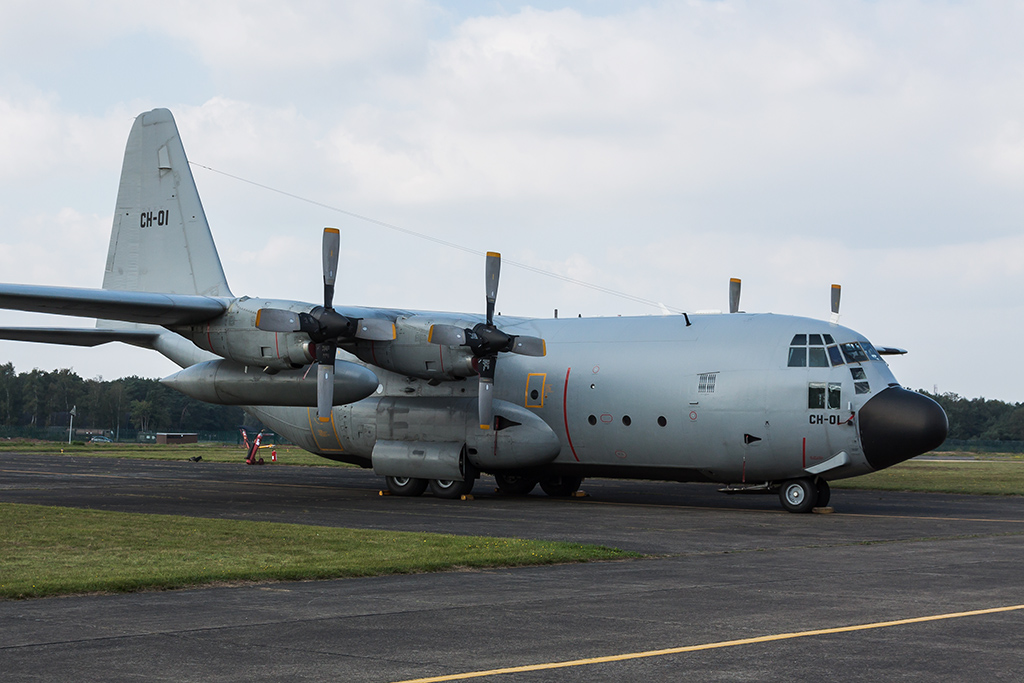Enhancing operational capabilities of the European air forces' air transport capacity was the main objective for the European Air Transport Command (EATC) after the organization was founded in 2010. EATC integrates the members' transferred national responsibilities and resources to ensure efficient operational control and to increase interoperability. The EATC's headquarters is based at Eindhoven Air Base (AB) in the Netherlands. Today, the EATC is the biggest European air transport command. With over 160 aircraft from seven participating NATO-countries at its disposal, the Command controls a major part of all European military air transport capacity.
From tactical to strategic air transport
During the Cold War era, European NATO-members assumed that conflicts with one or more members of the Warsaw Pact had to be settled within or close by European soil. Defense budgets were therefore aimed at operating fighter aircraft for air-to-air combat, close air-support or short ranged bombings. NATO-partners who could afford to operate their own transport aircraft used mostly tactical transport aircraft, like the C-130, C-160, G-222 and F-27.
After the fall of the Berlin Wall in 1989 and especially during the first Gulf War in 1991 it became clear that future conflicts would occur outside of Europe. To transport personnel and goods to conflict area, strategic transport aircraft with a big range and transport capacity were required. The Netherlands were the first in Europe to recognize this and bought two DC-10s from the civil airline company Martin Air. Both came into service of the Royal Netherlands Air Force (RNLAF) after their conversion into strategic Multi Role Tanker Transport (MRTT) aircraft in 1995.
Cooperation needed
NATO-operations like ISAF (International Security Assistance Force, Afghanistan, 2001 - 2014) and the results of several NATO-studies showed that neither NATO nor the individual members of the European Union had sufficient transport capacity and transport coordination. To address this, a far-reaching international cooperation appeared to be the solution to increase military effectiveness and readiness. Lieutenant-colonel Angélique, Dutch legal advisor to the EATC: "The first idea for an international cooperation dates back to 1999. Successively the European Air Transport Coordination Cell and the European Airlift Center were established, in order to coordinate European air transport. With varying success. After a period of 10 years of new studies and consultations between the countries Belgium, Germany, France and the Netherlands, the EATC was formed on the 1st of September 2010 and based at Eindhoven AB in the Netherlands. The EATC took over the Operational Control (OpCon) of the German, French and Dutch fixed-wing transport aircraft that same year. In 2011, 2014 and 2016 the fixed-wing transport aircraft of Belgium, Spain and Italy followed. Luxembourg builds up its air components and participates in EATC since 2012, currently resulting in seven participating NATO-members." Luxembourg contributes for example by offering civilian Medevac (Medical Evacuation) assets under EATC control.
>Organization
Lieutenant-colonel Angélique about the EATCs objectives: "We are focused on combining operational capabilities of member nations and improving the effectiveness and efficiency in conducting air transport, air-to-air refueling and aeromedical evacuation missions. The EATC integrates all transferred national responsibilities and aircraft to ensure efficient operational control and to increase interoperability." To achieve these objectives, the EATC has a distinctive organization. Angélique: "The EATC has one Multinational Air Transport Committee (MATraC), being the highest decision level. MATraC is composed of the air chiefs of the member nations. Furthermore, the EATC is organized into divisions. Its interdependent pillars are the Policy & Support Division, the Operational Division and the Functional Division. The divisions interact closely and work hand in hand, thereby increasing effectiveness and efficiency."
Lieutenant-colonel-pilot Marco, staff officer of the Policy & Support Division adds: "My division supports the activities and proceedings of EATC headquarters. We also liaise with external actors and we are a think-tank for an innovative air transport and air-to-air refueling future. This division is also responsible for legal affairs, finance and other aspects of business management."
The Operational Division plans, tasks and controls air missions on behalf of the member nations both in peacetime and in times of crises. Within the operational pillar, the available air transport fleet, consisting of about one hundred and sixty transport aircraft, is used as optimally as possible through pooling and sharing. To be able to do so, the division is structured in branches, each dealing with the specific aspects of the air transport mission cycle: planning, tasking, controlling and reporting on missions, including providing intelligence information. Marco: "We have around 160 aircraft at our disposal, consisting of around 130 transport aircraft, 7 VIP aircraft and 19 tanker aircraft. On average, 60-70 flights per day are planned and carried out by the EATC. Several of 'our' aircraft can also be used for strategic aeromedical evacuations."
The Functional Division acts as a key enabler to promote common values and shared concepts and fosters the harmonization of doctrines, regulations and procedures among nations. The EATC works on the harmonization of training, regulations and logistical support. By conducting studies, the EATC develops common policies and standards in the field of air transport.
How
Lieutenant-colonel Angélique explains how the EATC works: "The key to the effective operation of the EATC's fleet is the integration of the operational responsibilities and the functional harmonization and standardization of regulations. The latter assures interoperable employment, maintenance and multinational training of the air transport crews and assets of the member nations. Besides that, the trust and confidence we have gained from our members make them more and more willing to pool and share aircraft with other member nations". To better harmonize regulations the Command uses three different levels of transfer of authority: recommending, coordinating and commanding. Each participating nation can choose which level the EATC is given on diverse employment, training or maintenance realms, allowing the Functional Division to bring the participating members together on several technical issues. Each member can change the level at any time. It's also possible to withhold participation from certain missions (red card) or even to withdraw aircraft from EATC-control. For example, France used its right to revoke aircraft when the country needing extra transport capacity for Operation Serval (French intervention in Northern Mali between 2012 and 2014 to oust Islamic militants).
ATARES
Services between members aren't financial compensated. Marco explains why: "Services are exchanged via the ATARES system (Air Transport, Air to Air Refueling and other Exchanges of Services). This is a cashless exchange system which is based on the Equivalent Flying Hour (EFH). One EFH is the equivalent of the cost price of one C-130/C-160 flying hour. All other aircraft types offered in the framework of the ATARES arrangement are calculated against this C-130/C-160 reference. The biggest advantage of this system is that without complicated contracts and exchanging currency we can balance our members commitments and requirements by actual flight hours. ATARES also enables nations to save on outsourcing expenses and optimizes the aircraft load factor (less empty space). Everything we do is focused on serving our members with the best means and greatest efficiency possible." This system also prevents intergovernmental discussions about how to administrate incoming money paid for provided EATC services. Most governments have to book that money into their General Funding, instead of (directly back) into the Defense budget. ATARES prevents certain political discussions within governments about compensation for services provided within EATC-context.
Air Transport and Air Refueling Requests
As said, the member states have transferred OpCon over their aircraft to the EATC. EATC determines how every member's air transport request is best met. Marco explains the process: "When the EATC receives an Air Transport or Air Refueling Request, our Planning Branch performs initial checks about the crew(s) needed, the availability of aircraft and the diplomatic clearances needed. After that, the flights are planned by the Tasking Branch and a so-called Air Tasking Mission Order is send to the squadron which executes the mission. Then, the specific mission is transferred to Mission Control, which handles the execution of the flight solving any eventual contingency problem. After each mission, the crew has to send in a mission report. We evaluate the mission and, if necessary, adjust our procedures to the lessons learned." This process looks a lot like the so-called Plan-Do-Check-Act cycle of dr. Deming and ensures that the EATC continuously improves its procedures and methods, while providing quality. Following this cycle, in 2017 the EATC performed around 50,000 flight hours during 8,300 missions. During these missions 215,000 passengers, 135,000 paratroopers and 20,000 ton of freight were transported and 375 AAR missions were flown. Also 1,150 patients were evacuated for medical reasons.
EART 2018
One of the most eye-catching exercises the EATC organizes is the annual European Air Refueling Training, or EART. Lieutenant-colonel-pilot Cris van Dijk, commander of the RNLAF 334 Squadron, says: "The Netherlands is the host nation to the EART and Eindhoven AB offers its facilities and crews. Besides air crews for the KDC-10, our colleagues from the 941st Squadron provide logistic support, such as air traffic control and the fire brigade. This way our ground crews are also involved in EART." Dion Polman, project officer with the European Defense Agency, adds: "The EARTs main objective is to provide a realistic training environment to exchange information and practice among tanker- and aircrews to improve effectiveness and efficiency as well as to harmonize procedures between tankers and receiving aircraft. The EART originally is an initiative of the European Defense Agency to overcome European Union's shortfall on tanker capabilities. Besides training Air to Air Refueling (AAR) missions and procedures with other EATC members, the EART is also supporting the major exercise Frisian Flag which is flown from - mainly - Leeuwarden AB, also in the Netherlands."
EARTs exercise director, colonel-pilot Andrea, explains in more details: "Training concepts are created by the EATC. In 2018 for the fifth time. During the exercise various air forces work together from a central location to refuel a complete fleet in the air within realistic training conditions. The receivers in this case are aircraft that participate in the Frisian Flag exercise, which is held during the same period as the EART. We did this twice before and we've already learned that combining training goals is a win-win situation. Continuation of the multinational AAR exercise which simultaneously offers more AAR capacity for Frisian Flag is a perfect way to serve the goals of both exercises."
Besides AAR, obviously, tactical, communications and retrograde procedures were trained during this edition in order to further optimize those. Because tanker (and transport) aircraft are considered so-called High Value Air Assets, scenarios were integrated in Frisian Flag during which the tankers had to be protected from the enemy or had to lead simulated damaged receivers to be guided during landing (accompanied letdown).
Two instead of five
Obviously the RNLAF participated again in EART 2018 with the KDC-10. Also returning to the exercise were a German Airbus A310 and a French C-135FR. Colonel-pilot Andrea: "This year a USAF KC-135R participated from Eindhoven AB, but the aircraft was withdrawn from the exercise on the second day, together with the French tanker. A crisis that arose in Syria lead to this withdrawal. We had planned to train rendezvous between the participating tankers as well as multi-tanker formations. For obvious reasons this aspect was cancelled." The withdrawn tankers were needed for operational missions. Italy initially planned to participate with a KC-767, but had to cancel in an earlier stage.
"Considering the limited amount of tankers operated by European NATO members, a spare aircraft simply isn't available easy," KDC-10 pilot major Martin adds. He continues: "And to add to that, our KDC-10 isn't only available for AAR missions or EATC exercises. Yes, we use our MRTT aircraft mostly for transportation of military freight and personnel, such as to Jordan and Mali, but it's also used for humanitarian operations. One striking example dates back to September 2017, when hurricane Irma struck the Caribbean islands. With the KDC-10 we brought in first aid goods and we evacuated people from the isle of Saint-Maarten." This operation was conducted under EATC OpCon.
Other exercises
The EATCs European Tactical Airlift Program contains several multiple tasking courses to harmonize tactical airlift within multinational environment. This program contains four different events: ETAP-T (training tailored to train European tactical airlift crews), ETAP-C (tactical training course), ETAP-I (training for instructor pilots) and ETAP-S (symposium to exchange experience between the different nations). The ETAP is executed by a permanent multinational center called the European Tactical Airlift Centre (ETAC) which is located in Zaragoza, Spain. Several EATC personnel are supporting the ETAC by laying down courses and syllabi, establishing the common procedures to be used and participating to the core team of the events. EATC and ETAC work closely together in order to offer efficient and tailored airlift training in Europe and to increase the interoperability among all partners.
Other examples of exercises the EATC organizes are the Multinational Aircraft Recovery Training (MART, pool and share air recovery manning and equipment), the Combined Air Terminal Operations Training (CATT) and the Advanced CATT.
Merge?
The Movement Coordination Center Europe, officially established in 2007, also addresses the recognized shortage of strategic transport. The main purpose of the MCCE is to provide cost saving alternatives for member nations by utilizing air, land and sea transport assets owned or leased by national militaries of our members or supported agencies. It seems therefore that MCCE as well as EATC address the same strategic lift problem. "It seems that way, but actually isn't all true", say Lieutenant-colonel Angélique and Lieutenant-colonel-pilot Marco almost in choir. Both elaborate: "The biggest differences are that EATC has OpCon over the aircraft and MCCE hasn't. Also, the EATC isn't part of NATO or the European Union (EU) organization. Therefore, EATC has the opportunity to handle transport or air refueling requests quickly because the command can communicate with member states directly instead of following NATO or EU procedures. Although the MCCE has more options for transports because it also coordinates transport over land and sea, MCCE focusses primarily at cost-saving options. The EATCs primary goal is efficiency. And last but not least, the procedures within EATC are harmonized and therefore the same for all members, such as rules concerning crew rest times, increasing interoperability." The two organizations are complementary and give an access to their members to a wide scope of transport lift. That's the reason why all nations benefit from taking part in both organizations (door-to-door solutions, sealift, inland surface transport, air transport, AAR).
Future
According to the EATC representatives being interviewed for this article, the current organization and number of members is ideal. That doesn't mean other nations can't apply for a membership anymore. Besides considering the assets and procedures an aspirant-member can bring in, the EATC also has to assess the potential geographical and operational synergies between the applying nation and the current participating nations. To tackle the issue, the build-up of a constellation of regional and operational EATC-like entities within Europe, linked functionally to EATC Eindhoven and relying on the same and common set of operational standards, may be a solution. An Eastern EATC for example could include Poland and other partners.
Europe's biggest transport unit is also considering increasing training and exercises. The annual EART could well will be held twice from next year on. Once flying from Eindhoven AB combined with Frisian Flag. Another option could be flying from Zaragoza AB or another EATC member's air base when the opportunity to take part in a large fighter exercise should presents itself. EATC is also considering expanding the frequency of other exercises. It's simply necessary, given Europe's need for air transport and AAR on the one hand and the shortage for interoperable and suitable aircraft to fulfill those needs on the other. One can only conclude that the EATC has indefinitely proven its success and usefulness so far and will continue to do so.
This article was also published in Lotnictwo Aviation International 11-2018.

